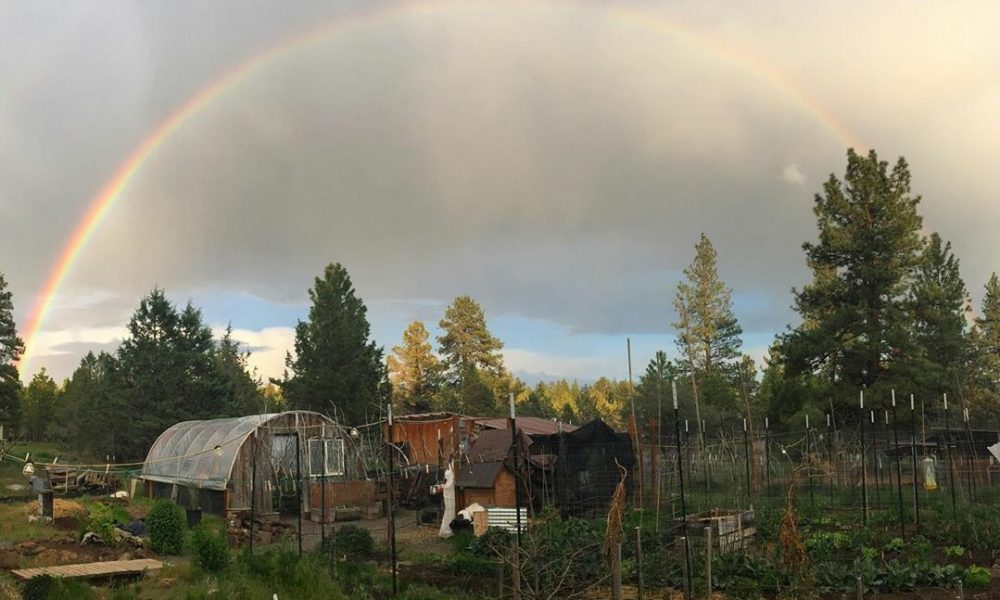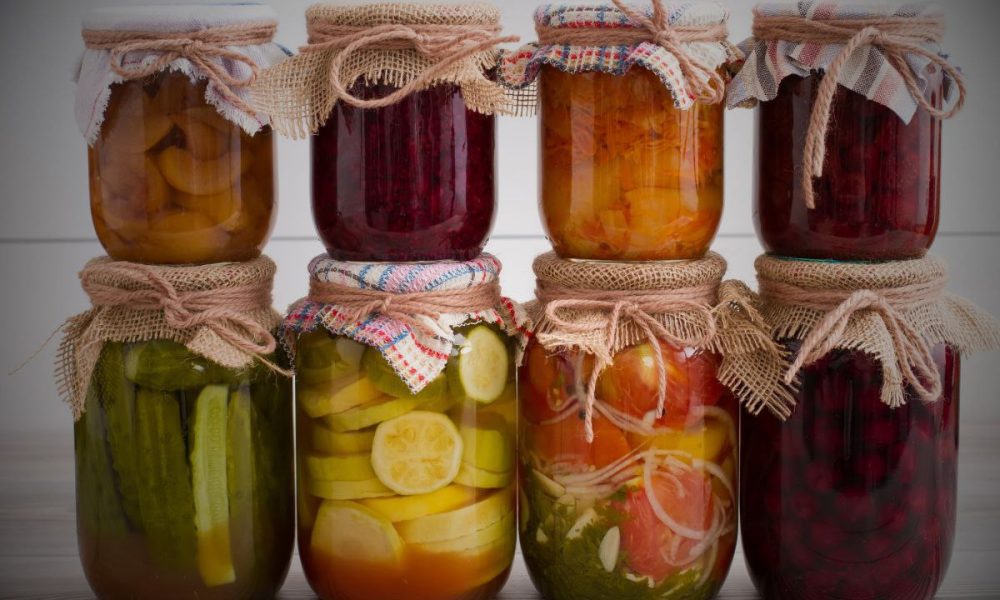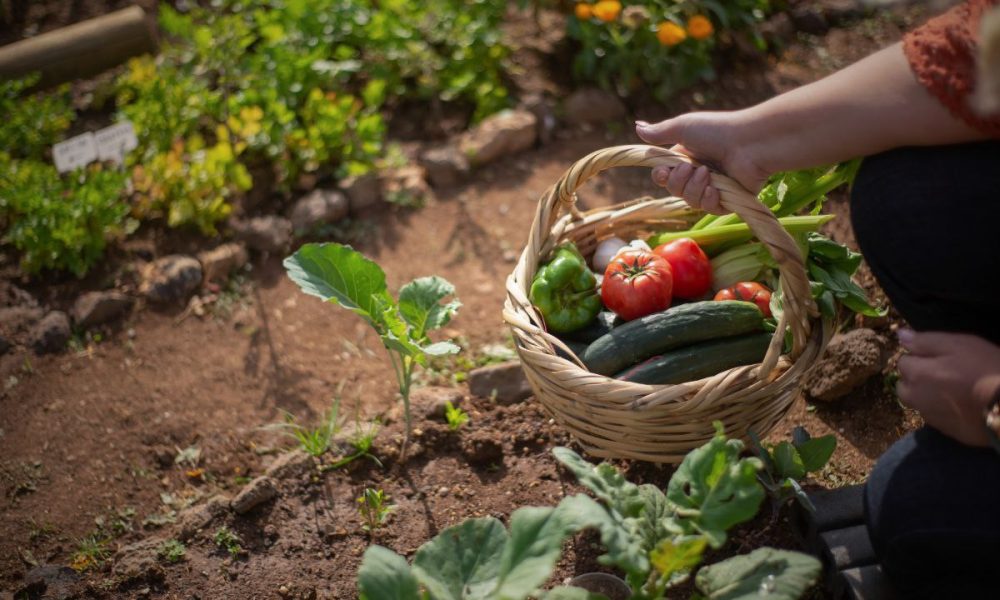In the middle of the winter of 2018, a humble plate of pork sausage and fried eggs blew my mind. It was a game changer, as this was our first homegrown pork. Pork from a hog nurtured here on our land, by our own hands, from birth to harvest. We’d been enjoying the wonderful fruits of our hard fought garden for a few years, but this felt different. Not to veggie-shame at all, we cherish every bite of those too, but you know, it was just different. The gratitude I felt, and the gravity of the moment was overwhelming. What a crazy feeling! How on earth could a couple of former city dwellers, with no animal agriculture background, figure out how to raise our own meat? And why in the world did we choose hogs? Well, I’ll tell ya!
A couple years before that awe-inspiring plate, we had made the decision to uproot ourselves from the nonsense that had been brewing in the San Francisco Bay Area for a long, long time. We were done living like sardines, around people we couldn’t relate to. Our dreams were much bigger, including producing food for ourselves, on our own terms, without being regulated and scrutinized to death by people who had never raised so much as a tomato. So we set out, and just kept following the road North, as if we were being pulled in that specific direction. I’m guessing our shared Northern European heritage had activated some deep down ancestral magnetic pull to a land of harsh winters and endless challenges. Somewhere where we’d have to really earn that bountiful life, but when we did, it would be so, so sweet, and so worth it. Eventually we were guided to our little high desert oasis in southern Oregon, under the towering pines in the rural mountains above alfalfa country. Bingo. Home sweet home.
It’s not an ideal piece of farm land, by any stretch. It’s dry as a bone, hotter than heck during the summer, snowed in during the winter, with nutrient poor volcanic sand soil and only a roughly 90 day gardening season from frost to frost. No matter though, because it’s flat, it already had a well and a little house, and enough trees had been cleared to give us good sunlight and enough room to build. We decided the potential for what it could be outweighed the challenges of what it was. We planted ourselves, and declared we were going to bloom!
Mapping out the garden plot and chicken coop was first. It was the end of Summer already, but we’re not great at sitting still and wanted to get a jump on the next year. That first plot ended up being bigger than the footprint of our house, because hey, priorities. Within a week we had our first load of compost trucked in, and with the addition of a 100% necessary 8’ deer fence we were off and running for planting in the Spring.
The first step in animal husbandry, the obligatory chickens, came next. It took a few months for me to get up the nerve to actually commit to purchasing the first 6 little fuzzballs from the feed store. Like more prodding than it took to get me to OK our 2 Great Pyrenees puppies. Those little peeps were just so fragile looking and I was nervous, truth be told! We aren’t able to free range, though, given the amount of flying and digging predators, so the coop and covered run we had built were constructed like an impenetrable fortress, making my concerns just a tad overblown. So, that first little box of chicks came home, lived indoors in a makeshift brooder until they were fully feathered out, and all was well.
1 month after biting the bullet on the pullets, having built up the confidence that we could successfully care for livestock, the first 2 little female piglets were purchased. Just like that, we were hog farmers. The girls, a spotted one and a red one, were 2 month old, cute as a button little “weaner” piglets from a local family. Their breed mix is Red Wattle, Berkshire, and Duroc, which are all Heritage breeds. They’re a bit different than the common lighting-fast-growing pink or white pig you think of when you think commercial hog farming. Heritage breeds grow slower, and are more specifically bred for either higher quality “bacon” or “fat”. Lucky for us, the breed mix of the girls are suitable for both needs. A baby boar from another family was added to the mix about a month later, and all of a sudden we had all the necessary biological components of a small-scale homestead pork production operation.
The first 3 hogs quickly outgrew the first shelter and fenced off area we’d built for them. For a short while, we’d be woken up every morning to the sound of our quickly growing little boar jumping over the 4 foot wooden wall that was supposed to keep him inside his pen. Kind of blatant a sign that we needed to expand, so expand we did. As hogs get bigger and start breeding, it quickly becomes a matter of safety and comfort to be able to have separate areas for sows to give birth and to raise their piglets, away from the other adults. More and more fencing was installed, more specific areas defined, more shelters assembled. You end up getting to be an expert at those funky little wire clips that hold fencing to t-posts, rather quickly!
Piglets are magical little beings, like the cutest little velvet covered things ever. Definitely a bonus because they tend to show up on the coldest snowiest night, around 2 or 3 am. They have this innate ability to crawl out of their birth goo and find the life-sustaining nipple within a minute or so of being born. It’s really an amazing thing to watch. They’re fighters from the start and are ready to sustain themselves independently from Mom within a few weeks to a couple months. Over the years we’ve been able to sell off most of the almost 60 piglets born here to people in our community, but we’ve also kept a few who didn’t sell before the off-season, meaning our sheltering configuration has grown and changed numerous times. Flexibility and adaptability has been key.
Hogs sound like a ton of work, so why do it, you may ask? Good question. It’s quite a leap to go from a small feathered animal that can survive off the land if need be, to a small herd of behemoths that require significantly more input in the form of food, housing and and attention. We initially made that leap in faith, not really knowing what we were getting into, and have learned quite a bit since! Hogs aren’t cheap, they can be pretty destructive, they require a lot of room, and they will figure out every single weakness in that fence you thought you’d repaired faster than a gifted kid solving a rubik’s cube. All valid concerns, and all things we figured out through trial and error. So, what are the pros?
I’d have to say the number 1 factor in choosing hogs is the amount of meat you get from 1 animal, and the versatility of that meat. From the same hog, at butcher weight of about 280-300lbs, or 6-8 months old, you can plan on having 180-200lbs of meat, fat and stock bones. That’s enough for a couple, for a year. 2 hogs, which are easier and more fun to raise than 1 since they’re buddy-buddy type animals, will probably feed your whole family, for quite some time.
I can tell you, we haven’t bought meat from a grocery store in years. The myriad of different cuts of meat you get from a hog keeps us creative kitchen types constantly coming up with new dishes. Of course you have the delicious standards of bacon, ribs, hams, and chops, but there are also steaks in there, roasts, and endless, literally endless varieties of sausage. There’s a type of sausage, or ground pork, for almost every culinary whim, and every meal of the day, thanks to the worldwide variables in spice blend mixtures. Then you start thinking about things like pulled pork, schnitzel, meatballs, cured meats…ok, now I’m getting hungry.
What else? They’re hearty animals. Feed them well, including natural pest and parasite control measures, and health is almost guaranteed. Give them shelter with enough straw during the winter and a cool mud hole during the summer, and you’ll have a very happy hog on your hands.
They have great personalities! They’re goofy, and I’d argue they’re smarter than dogs. Now, that may be a deal breaker if you can’t bear the thought of butchering an animal like that. An animal that trusts you. Fair enough. You can also raise them at arms length and you’ll still get way better pork than you’d find at the grocery store. For us, though, it’s a much more comforting feeling knowing the animals we’re raising, with the ultimate purpose of harvesting, were given the absolute best life possible, with joy we’ve personally witnessed. And to know that for sure, we have to be very involved. Even up until the very last minute. We’ll be by his side and can say with certainty that there was no fear in his eyes. That means we harvest here on site. No shipping off to a final destination, alone and afraid. I can’t even imagine that. We feel that’s the least we can do for that hog as a thank you for the overwhelming abundance of nutrition that animal will provide us.
To get to that place of peace with the cycle of life and death wasn’t just an overnight thing. We worked up to it, for sure, and there’ve been many ups and downs. We’re currently over 3 years in, and on our 7th litter, which have been the most time-consuming and challenging to date. That’s a story for another time. That’s the thing, though. There will always be ups and downs and challenges. Do you give up? No. Giving up doesn’t even enter your mind at this point. You embrace those challenges, and you become stronger for it. Raising your own food is an entirely different thing than walking into a store and picking out packages, and it requires a whole new mindset. Or, maybe ironically, a return to a very old mindset. Cooking every single meal from scratch, and nurturing the ingredients you’re using for those meals, becomes multiple full-time jobs that you become happy to show up to day in and day out. Freedom really does require an incredible amount of responsibility! It’s hard, dirty, and sometimes unpleasant, but the rewards are worth it. Your first plate of homegrown sausage and eggs will definitely prove that!
-Breanna
@ameliaameliorate on Instagram




